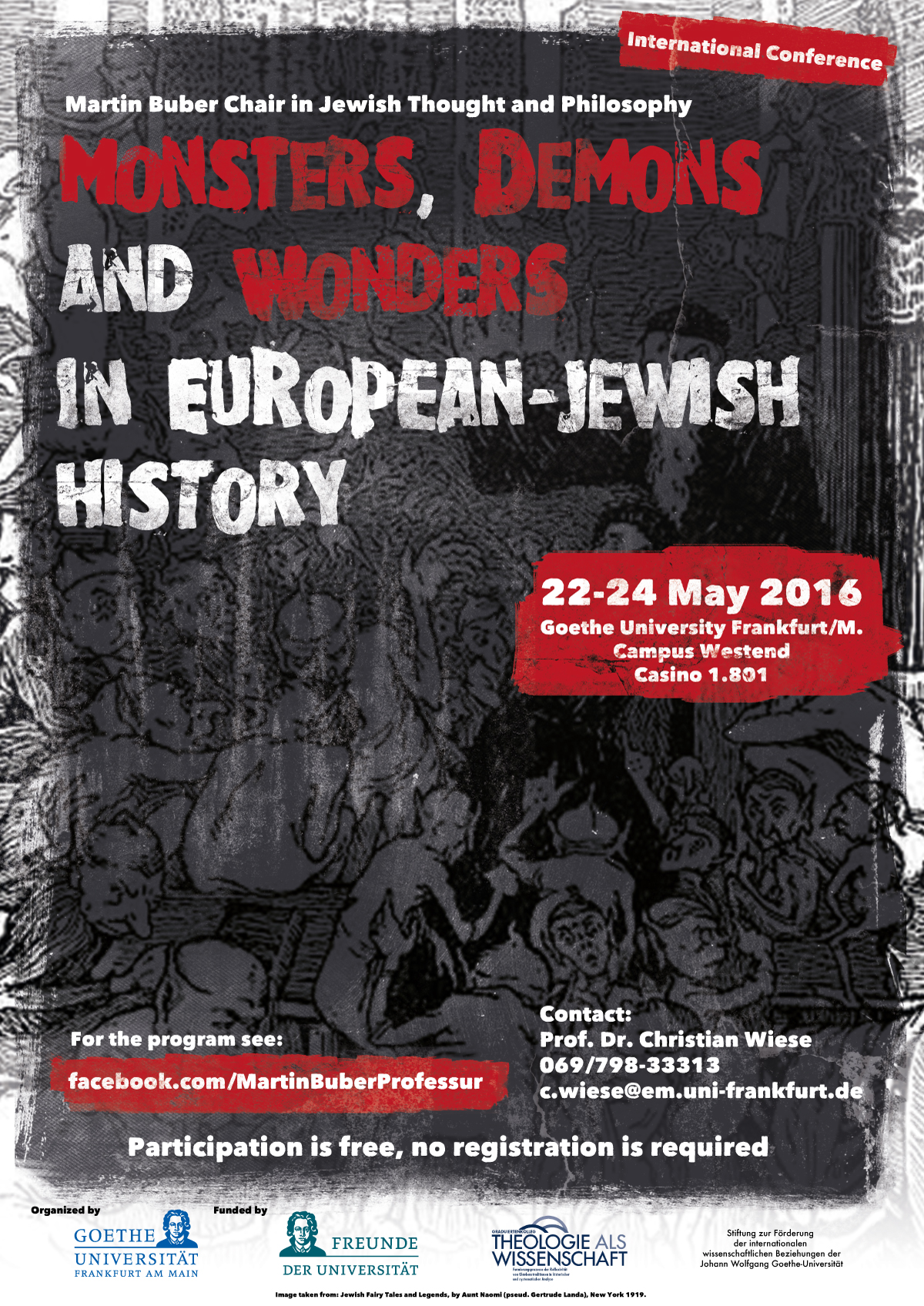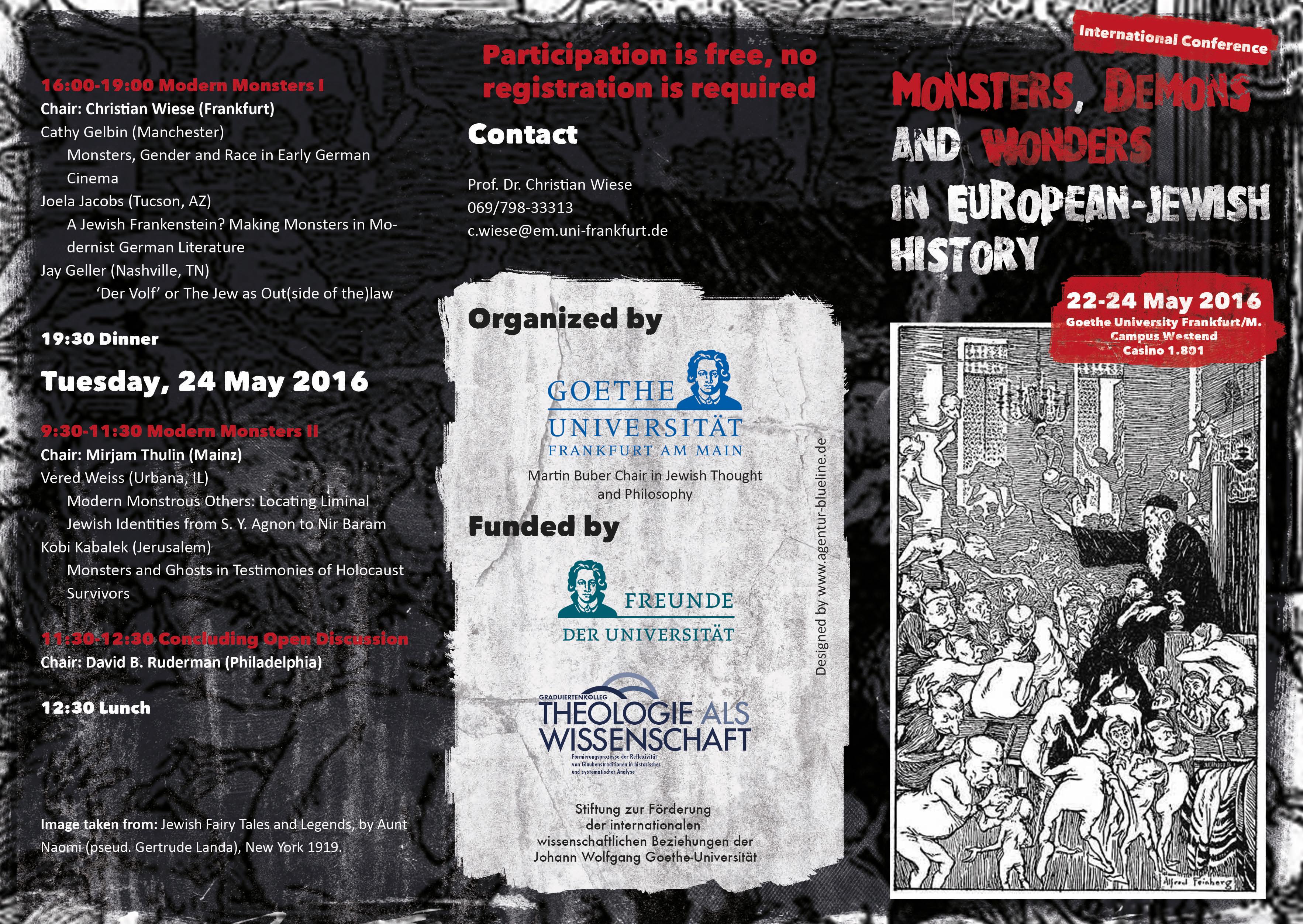Monsters, Demons and Wonders in European-Jewish History
 The Martin Buber Chair for Jewish Thought and Philosophy
The Martin Buber Chair for Jewish Thought and Philosophy
Goethe University, Frankfurt am Main
Campus Westend, Casino Building, Room 1.801
22-24 May 2016
Monsters are creatures of the dark. They conceal themselves under children’s beds or in deep closets, emerging only after we turn out the lights. At the same time, these shadowy creatures have a kind of unique revelatory power, allowing them to bring to light some of the most well hidden truths. The very word monster is derived from the Latin monstrare meaning to show, to demonstrate, or to reveal. It is this unique revelatory power of the monster which makes it such a powerful ally to the historian. The trans-historical presence of the monster is an ominous sign of continuity in history, and at the same time, a reminder of the complete and utter strangeness of past cultures and ways of thought. The monster is a compulsive border- crosser, which bears powerful testimony to the artificial nature of rigid distinctions. So transgressive, so untamable, it defies all our attempts to define it, to contain it within a single genre, period or space. We encounter it in novels and broadsheets, in folktales and archival documents, in science books and theological works. From the pages of these various texts, it reaches out to us, mocking our tales of secularization, modernization, or rationalization and offering us a different history—not one of unfolding narratives, but of shifting anxieties, of fears that are at once primordial and particular, ancient and new.
The international conference “Monsters, Demons and Wonders in European-Jewish History” will bring together, for the very first time, scholars working within a variety of disciplines and on a wide range of periods and spaces, to discuss the remarkable utility offered by monsters, demons and wonders—particularly to scholars of the Jewish past. Perceived throughout much of history as monsters or wonders in their own right, European Jews invoked images of monsters, demons and wonders in their texts, art, and folktales. Throughout the three days of the conference, we will attempt to unravel the history and the idiosyncrasies of these images, and to pinpoint their political, cultural and religious uses from the medieval and into the modern period.




